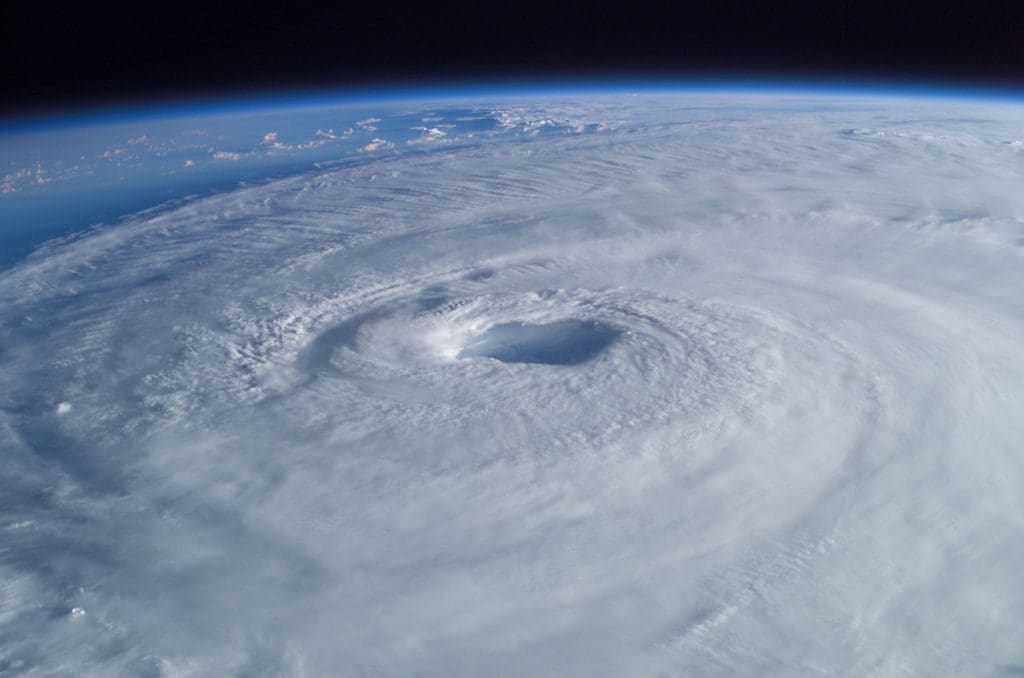
Hurricane researchers at the Colorado State University Tropical Meteorology Project on Thursday predicted an above-average Atlantic hurricane season with 17 named storms in 2021, citing the likely absence of El Niño as a primary factor.
The CSU researchers made a similar prediction a year ago, and the season turned out to be the most active in history, with 30 named storms, 13 of which turned into hurricanes and six into major hurricanes. The team predicts that 2021 hurricane activity will be about 140 percent of the average season. By comparison, 2020’s hurricane activity was about 170 percent of the average season. The 2020 hurricane season had six land-falling continental U.S. hurricanes, including Category 4 Hurricane Laura which battered southwestern Louisiana.
For 2021, the project team predicts 17 named storms during the Atlantic hurricane season, which runs from June 1 to Nov. 30. Of those, researchers expect eight to become hurricanes and four to reach major hurricane strength (that is a Category 3, 4 or 5 on the Saffir/Simpson scale) with sustained winds of 111 miles per hour or greater.
The team bases its forecasts on statistical models and information using 40 years of historical hurricane seasons and evaluates conditions including Atlantic sea surface temperatures, sea level pressures, vertical wind shear levels (the change in wind direction and speed with height in the atmosphere), El Niño (warming of waters in the central and eastern tropical Pacific) and other factors.
So far, the 2021 hurricane season is exhibiting characteristics similar to 1996, 2001, 2008, 2011 and 2017 – the year that brought the devastating impact of hurricanes Irma and Maria to the U.S. Virgin Islands.
“All of our analog seasons had above-average Atlantic hurricane activity, with 1996 and 2017 being extremely active seasons,” said Phil Klotzbach, a research scientist in CSU’s Department of Atmospheric Science and lead author of the report.
Tropical Atlantic sea surface temperatures are near their long-term averages, the CSU report says, while subtropical Atlantic sea surface temperatures are much warmer than their long-term average values. The warmer subtropical Atlantic also favors an active 2021 Atlantic hurricane season.
The tropical Pacific currently has weak La Niña conditions, that is, water temperatures are somewhat cooler than normal in the eastern and central tropical Pacific. While these waters may warm slightly during the next few months, CSU does not currently anticipate El Niño for the peak of the Atlantic hurricane season.
El Niño tends to increase upper-level westerly winds across the Caribbean into the tropical Atlantic, tearing apart hurricanes as they try to form.
While the tropical Atlantic currently has water temperatures near their long-term averages, the warmer-than-normal subtropical Atlantic typically forces a weaker subtropical high and associated weaker winds blowing across the tropical Atlantic. These conditions then lead to warmer waters in the tropical Atlantic for the peak of the Atlantic hurricane season.
The CSU team will issue forecast updates on June 3, July 8 and Aug. 5.
As always, the researchers caution coastal residents to take proper precautions.
“It takes only one storm near you to make this an active season,” Bell said.
The report also includes the probability of major hurricanes making landfall:
– 69 percent for the entire U.S. coastline (average for the last century is 52 percent)
– 45 percent for the U.S. east coast including the Florida peninsula (average for the last century is 31 percent)
– 44 percent for the Gulf Coast from the Florida panhandle westward to Brownsville (average for the last century is 30 percent)
– 58 percent for the Caribbean (average for the last century is 42 percent)
The names selected for the 2021 Atlantic Tropical Cyclone are Ana, Bill, Claudette, Danny, Elsa, Fred, Grace, Henri, Ida, Julian, Kate, Larry, Mindy, Nicholas, Odette, Peter, Rose, Sam, Teresa, Victor and Wanda.


